| Listing 1 - 10 of 47 | << page >> |
Sort by
|
Book
ISBN: 0691069867 9780691069869 Year: 1993 Publisher: Princeton : Princeton University Press,
Abstract | Keywords | Export | Availability | Bookmark
 Loading...
Loading...Choose an application
- Reference Manager
- EndNote
- RefWorks (Direct export to RefWorks)
Egypt in Late Antiquity brings together a vast amount of information pertaining to the society, economy, and culture of a province important to our understanding of the entire eastern part of the later Roman Empire. Focusing on Egypt from the accession of Diocletian in 284 to the middle of the fifth century, Roger Bagnall draws his evidence mainly from documentary and archaeological sources, including the papyri that have been published over the last thirty years. He deals with the natural and technological setting, the life of Greco-Roman cities and Egyptian country villages, family life, religion, language and literacy, and the distribution and uses of power. One dominant theme in this volume is the changing relationship between the cities and villages. Bagnall examines how the villages, which had been undergoing integration into the urban economies, were losing their internal structure and sense of community as the influence of local temples declined. He argues that in the fourth century Christianization and the development of Coptic allowed Hellenism to serve as a vehicle for a resurgent native culture, with the church providing new internal structure for the villages and new ties to the cities.
Egypt --- Egypte --- Civilization --- Civilisation --- -Civilisation --- History, B.C.332-640 --- Égypte --- Egypte. --- -Egypt --- Egypt. --- History, B.C.332-640. --- 332 B.C.-638 A.D. --- Egypt - Civilization - 332 B.C.-638 A.D.
Book
ISBN: 0297775308 9780297775300 Year: 1978 Publisher: London Weidenfeld and Nicolson
Abstract | Keywords | Export | Availability | Bookmark
 Loading...
Loading...Choose an application
- Reference Manager
- EndNote
- RefWorks (Direct export to RefWorks)
Egypt --- Egypte --- Civilization --- Civilisation --- -Civilization --- -Egypt --- Egypt - Civilization - To 332 B.C. --- Egypt - Civilization - 332 B.C.-638 A.D.
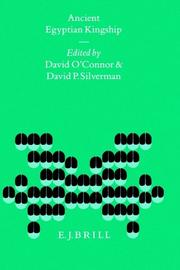
ISBN: 9004100415 9789004100411 Year: 1995 Volume: 9 Publisher: Leiden Brill
Abstract | Keywords | Export | Availability | Bookmark
 Loading...
Loading...Choose an application
- Reference Manager
- EndNote
- RefWorks (Direct export to RefWorks)
Pharaohs --- Pharaons --- Egypt --- Egypte --- Civilization --- Kings and rulers --- Civilisation --- Rois et souverains --- -Civilization --- -Pharaohs. --- -Pharaohs --- Pharaohs. --- Egypt - Civilization - 332 B.C.-638 A.D.
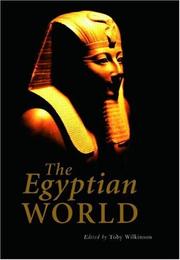
ISBN: 0415427266 9780415427265 113675377X 0203820932 9780203820933 9781136753770 9781136753725 9781136753763 9780415562959 Year: 2010 Volume: *4 Publisher: London Routledge
Abstract | Keywords | Export | Availability | Bookmark
 Loading...
Loading...Choose an application
- Reference Manager
- EndNote
- RefWorks (Direct export to RefWorks)
Egypt --- Egypte --- Religion --- Geography --- Civilization --- Géographie --- Civilisation --- Géographie --- Geography. --- Egypt - Civilization - To 332 B.C. --- Egypt - Civilization - 332 B.C.-638 A.D.
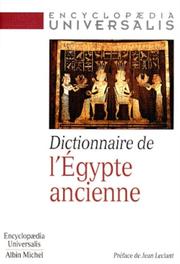
ISBN: 2226096175 9782226096173 Year: 1998 Publisher: Paris : Paris : Encyclopaedia Universalis, Albin Michel,
Abstract | Keywords | Export | Availability | Bookmark
 Loading...
Loading...Choose an application
- Reference Manager
- EndNote
- RefWorks (Direct export to RefWorks)
Egypt --- Civilization --- Religion --- Antiquities --- Egypt - Civilization - To 332 B.C. --- Egypt - Religion --- Egypt - Civilization - 332 B.C.-638 A.D. --- Egypt - Antiquities --- Egyptologie --- Dictionnaires
Book
ISBN: 9782701164915 2701164915 Year: 2016 Publisher: [Paris] Belin
Abstract | Keywords | Export | Availability | Bookmark
 Loading...
Loading...Choose an application
- Reference Manager
- EndNote
- RefWorks (Direct export to RefWorks)
Depuis une trentaine d'années, les découvertes archéologiques mais aussi le réexamen des données anciennes ont profondément renouvelé notre connaissance de l'Égypte ancienne. Ces avancées permettent aujourd'hui de proposer un récit neuf, dégagé de la routine de l'histoire cyclique où, entre les « empires » forcément fastueux, viennent s'intercaler de sombres « périodes intermédiaires » marquées du sceau de la décadence.Les seize chapitres qui composent ce volume évoquent autant de moments de cette longue histoire qui commence à la fin du IVe millénaire av. J.-C. et s'achève avec la conversion des empereurs romains au christianisme. Malgré les transformations écologiques, géostratégiques, sociales et économiques que connut l'Égypte durant ces trois millénaires, ses rois, même ceux qui venaient de Perse, de Macédoine ou de la lointaine Rome, se glissèrent dans un costume politique taillé à la fin du IVe millénaire av. J.-C.Le pouvoir pharaonique en fut-il, pour autant, immuable ? Il faut, pour répondre, ne pas se laisser aveugler par les textes et les monuments suscités par les pharaons eux-mêmes : pyramides écrasantes, temples gigantesques, somptueux masques d'or donnent en effet une image pour le moins erronée d'omnipotence. Illusion qui vole en éclats si l'on abandonne le mythe de l'exception égyptienne et que l'on envisage l'histoire politique des monarchies comme participant à celle, plus générale, des mondes anciens.Près de trois cents documents iconographiques, une trentaine de cartes illustrent cette histoire de l'Égypte des Pharaons
Égypte --- Civilisation --- Egypt --- Civilization --- Égypte ancienne --- --Civilisation --- --Pharaon --- --Egypt --- Égypte --- Pharaon --- Egypt - Civilization - To 332 B.C. --- Egypt - Civilization - 332 B.C.-638 A.D.
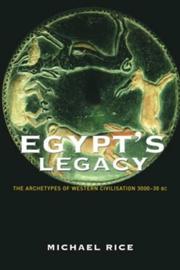
ISBN: 0415268761 041515779X Year: 1997 Publisher: London Routledge
Abstract | Keywords | Export | Availability | Bookmark
 Loading...
Loading...Choose an application
- Reference Manager
- EndNote
- RefWorks (Direct export to RefWorks)
Archetype (Psychology). --- Archetype (Psychologie) --- Archetype (Psychology) --- Archétype (Psychologie) --- Imagery (Psychology) --- Psychoanalysis --- Subconsciousness --- Symbolism (Psychology) --- Egypt --- Civilization --- To 332 B.C. --- 332 B.C.-638 A.D.
Book
ISBN: 9781784916008 1784916005 Year: 2017 Publisher: Oxford: Archaeopress Archaeology,
Abstract | Keywords | Export | Availability | Bookmark
 Loading...
Loading...Choose an application
- Reference Manager
- EndNote
- RefWorks (Direct export to RefWorks)
The eleventh International Congress of Egyptologists took place at the Florence Egyptian Museum (Museo Egizio Firenze), Italy from 23- 30 August 2015. The conference was organised by the International Association of Egyptologists (IAE), the Soprintendenza Archeologia della Toscana (Ministero dei Beni e delle Attivita Culturali e del Turismo), CAMNES (Center for Ancient Mediterranean and Near Eastern Studies), the University of Florence (SAGAS department), and with the support of the Istituto Lorenzo de' Medici. From animal mummies to Ancient Egyptian vocabulary to Imperial Cult Temples: of intriguing topics there was no shortage. The proceedings volume will present approximately 130 peer-reviewed papers alongside a selection of posters.
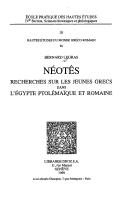
ISBN: 2600003916 9782600003919 Year: 1999 Volume: 26 Publisher: Genève Droz
Abstract | Keywords | Export | Availability | Bookmark
 Loading...
Loading...Choose an application
- Reference Manager
- EndNote
- RefWorks (Direct export to RefWorks)
Adolescence --- Greeks --- Young men --- Grecs --- Jeunes hommes --- History --- Social life and customs --- Histoire --- Moeurs et coutumes --- Egypt --- Egypte --- Civilization --- Civilisation --- Youth --- 332 B.C.-638 A.D.
Book
ISBN: 9780198835318 0198835310 0191885827 0192572164 Year: 2020 Publisher: Oxford Oxford University Press
Abstract | Keywords | Export | Availability | Bookmark
 Loading...
Loading...Choose an application
- Reference Manager
- EndNote
- RefWorks (Direct export to RefWorks)
This book presents the first detailed study of Tebtunis, a village in Egypt within the Roman Empire, in the first century AD. It is founded on the archive material of the local notarial office, or grapheion, which was run by a man named Kronion for most of the mid-first century. The archive, unparalleled in antiquity, includes over two hundred documents written on papyrus which attest a wide range of transactions made by the villagers over defined periods of time, in particular the years AD 42 and 45-7 under the reign of the emperor Claudius. This evidence provides a unique insight into various aspects of village life: the level of participation in the written contractual economy; the socio-economic stratification of the village, including the position of women, slaves, priests, and the role of the elite; the functions of associations; the types and importance of agriculture; and non-agricultural activities. 0This multitude of data reveals a highly diversified village economy, a large involvement in written transactions among all the strata of the population, and a rural society living mostly above subsistence level. Tebtunis provides a model of village society that can be used to understand the majority of the population within the Roman Empire who lived outside cities in the Mediterranean, particularly in the other eastern and more Hellenized provinces.
Egypt --- Antiquities, Roman. --- Civilization --- Material culture --- Tebtunis (Extinct city) --- Antiquities, Roman --- Civilization. --- Classical antiquities. --- Vie rurale --- 332 B.C.-638 A.D. --- Egypt. --- Tebtynis (ville ancienne) --- Égypte
| Listing 1 - 10 of 47 | << page >> |
Sort by
|

 Search
Search Feedback
Feedback About UniCat
About UniCat  Help
Help News
News